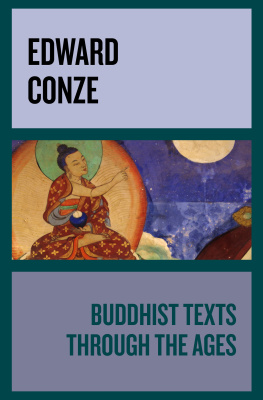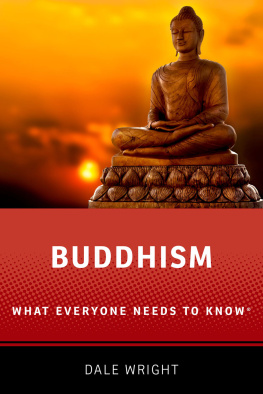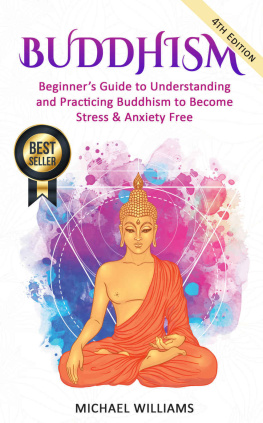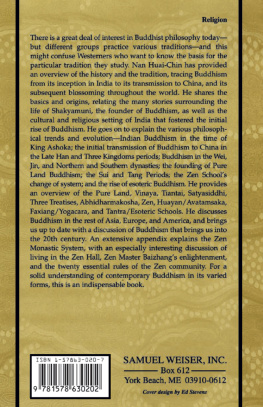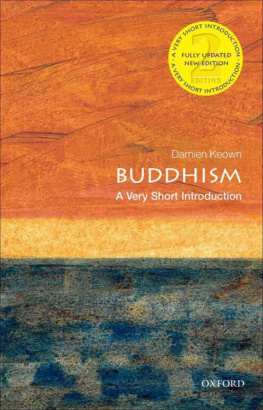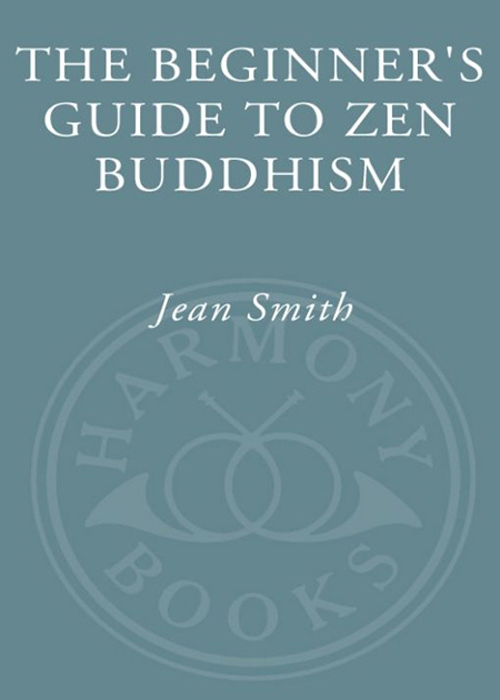
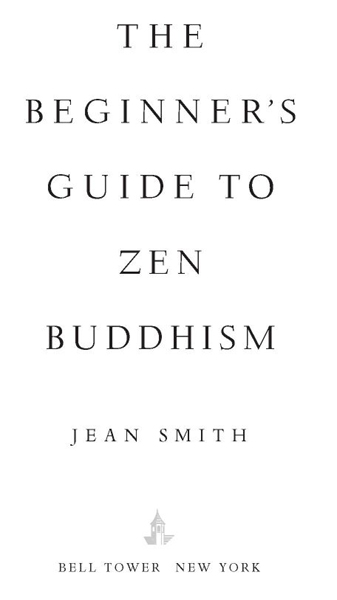
Table of Contents
To those who teach us that
we are already whole
Preface
You cant practice Zen Buddhism by reading a book.
BUT IF YOU ARE JUST beginning to look into meditation practice and Zen Buddhism, you may find yourself confronted by such an array of unfamiliarand perhaps even contradictory suggestions and ideas that you dont know even where to start. So you dont.
If youre stymied by how to begin, The Beginners Guide toZen Buddhism is intended for you. This is not a dharma book that expounds the teachings of Zen Buddhism. Rather, its a brief collection of signposts to get you started. Although you cant develop a meditation practice through reading, any more than you can master a new city by looking at a map, you can orient yourself to the direction you want to take in your exploration. Let this book be your first guide as you begin what may well be the questand the most challenging adventureof your life.
The inspiration for much of the material in this guide is the teachings of Pat Enkyo OHara Sensei, resident teacher of the Village Zendo in New York City, to whom I am greatly appreciative, but the emphasis and expression of everything within this book are entirely my own responsibility. Gassho, Enkyo.
Introduction
FINDING WHAT YOURE SEEKING
Theres a ragged uneasiness around the edges of your awareness.You realize instinctively that something is missing in your life. Youtry to fill that space with television and consumption, but youvediscovered that they dont really satisfy you. Its like an itch thatcant be scratchedsomething you cant quite reach even throughpsychotherapy or martial arts or a self-help group. You need somethingthat gives you a deeper draught, a more fulfilling sense ofunderstanding.
THE AWARENESS THAT something is missing in life is generally what motivates people to explore Zen Buddhism. As we try to learn how to fill the emptiness, meditationzazenis our greatest teacher. When we siteven if our first experience is five minutes of a buzzing mind and a twitching bodywe can begin to see something about the nature of our mind, and we discover that we want to find out more. Meditation allows the mind to stop getting caught up in the attachments that are insatiable. Meditation enables us to practice Zen Buddhism. But just what is Zen?

The shape of the window at thisJapanese-style zendo is derivedfrom the head of a flame.
THE SEARCH FOR ZEN
We can talk about Buddhism and about Zen Buddhism from many different perspectivesreligion, philosophy, psychology, art. But perhaps the best way to see Zen is as a way of life.
Certainly Zen can be practiced as a religion, but it doesnt have to be. In fact, many of us in the West came to Zen because we wanted to get away from religion. Then we discovered that there are many aspects of Zenformal elements, services, ritualsthat look very much like religion. Religion is a tricky concept. From one perspective, it can be seen as obscuring insight by force-feeding adherents what they are supposed to believe. But religion can also be seen as something that nourishes insight and allows it to be passed on. Thats the sense in which the word religion applies to Zen: Zen provides a structure that supports our exploring the practice and the teachings for ourselves. Philosophy implies a way of thinking about, a point of view about, the world. Psychology emphasizes a way of understanding how people respond to life. Zen Buddhism has all of these elements of religion, philosophy, and psychology, but seeing Zen as a way of life brings practice down to day-in and day-out, everyday living.
Vietnamese Zen master Thich Nhat Hanh, in Zen Keys, captured the everyday nature of Zen practice when he recalled a conversation between the Buddha and a renowned philosopher:
I have heard that Buddhism is a doctrine of enlightenment. What is your method? What do you practice every day?
We walk, we eat, we wash ourselves, we sit down.
What is so special about that? Everyone walks, eats, washes, sits down....
Sir, when we walk, we are aware that we are walking; when we eat, we are aware that we are eating.... When others walk, eat, wash, or sit down, they are generally not aware of what they are doing.
In Buddhism, mindfulness is the key. Mindfulness is the energy that sheds light on all things and all activities, producing the power of concentration, bringing forth deep insight and awakening. Mindfulness is at the base of all Buddhist practice.
An ancient koan, or teaching story, likens entering into genuine Zen practice as stepping forward from the top of a hundred-foot pole. How do people take this first step? What does it feel like? To a certain extent, the answers depend upon who you are and where you are and when you decide to step off the top of the pole.
One generation of American Buddhists stepped off by reading the Japanese Buddhist scholar D. T. Suzuki in high school in the 1950s and 1960s, then moved on to books by Alan Watts, Jack Kerouac, and the beatnik dharma bums. For many of these people, some of the ideas from Japan, especially the notions of aesthetic freedom within certain formal constraints, initially had great appeal. This interest was primarily Buddhism from the neck up, based on books. In those days, a book on Zen came out only once every several years, so people could read everything that was published. But reading alone consistently proved unsatisfactory, and they eventually went in search of the practice itself.
In the half-century since then, the interest in Buddhism and especially Zen Buddhism has grown and has spread. There are many more books, but there are also myriad other expressions of and resources for encouraging that first step off the pole. Even in relatively small cities, at Zen centers or local colleges, you usually can find courses in ikebana, Japanese flower arrangement, within the framework of Zen; in haiku, the Japanese poetry form that expresses the nonduality of Zen; and certainly in zazen, meditation.
Today many people start out as Zennists rather than as Buddhists. They embrace some of the wonderful aspects of Zenthe aesthetic, especially the Japanese style, as well as the freedom, swashbuckling wit, and great spirit of humor and rebellion. They meditate and feel that their practice is complete without ever realizing that it rests on the larger foundation of the old teachings of Buddhism. But the longer they practice, the more they come to see that what first attracted them were the artifacts of a tradition. The living, breathing element of Zenwhat is underneath itcomes out of the Four Noble Truths, which are explored in chapter 6 and are quintessentially what the Buddha saw. Today, the life and teachings of the Buddhathrough the ecumenism that marks American Buddhismhave become integral to practice.
Many different types of Buddhism are currently being practiced in the United States. The three forms of Buddhism that the most Americans embrace todayall based on the Buddhas teachings but having different emphasesare
Next page



